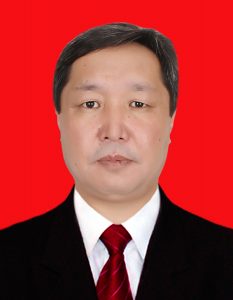
Makyev Sagynbek T., Ph.D, (Dr.habil , Doctor of Habilitation (Reading)
Faculty of Business and Management,
Osh State University, Osh, Kyrgyzstan
E-mail: makyev-s@mail.ru
Throughout the human history, migration has been a courageous expression of the individual’s will to overcome the hardship and achieve a better life. Today, as a result of globalization and advances in communications and transportation, the number of people willing and able to move to other places has greatly increased.
The recent years the Kyrgyz Republic, as we all know, has also become an active participant of the international migration processes and by scopes it is more pertinent to the States of the exodus. Currently, according to our estimates, outside the Kyrgyz Republic, more than half a million of Kyrgyz citizens perform their temporary labor activities.
There is every a reason to believe that the external labor migration has affected almost every second family in Kyrgyzstan.
Modern labor migration of Kyrgyzstan’s population is peformed largely in a spontaneous, informal and illegal way. It looks like uncontrolled, veiled phenomenon. Currently the whole network structures of cooperation in export and import of labour force have been formed. There, in recent decades, the unconventional sector of economic activity has been developing, comparable in revenue with 1/3 of GDP, but that is outside of the government’s sphere and that is partially available to monitoring.
Due to the fact that labour migration is primarily of an illegal nature, it is difficult to determine the real number of labour migrants. Statistical agencies of Kyrgyzstan and its migration partners can not name the exact volume of labor migration from the Republic. Information of the official bodies often requires to make certain corrective estimates.
In many cases the main source of information are surveys, expert assessments. Currently, according to expert assessments, approximately 720 thousand of Kyrgyz citizens work abroad. According to the migration service of the Kyrgyz Republic, more than 50 thousand people leave the Republic every year for a long time. The bursts of exodus abroad was observed in 2000, 2005, 2010. The migration mobility of the people was affected by socio-economic and political disorders.
By estimations, at the beginning of 2015 there were about 500 thousand people in Russia, about 80 thousand in the Republic of Kazakhstan, 10-15 thousand worked in South Korea, up to 10 thousand people worked in the Republic of Turkey. The citizens of Kyrgyzstan work in the States of Western Europe, USA, South-East of Asia. Thanks to the accession of Kyrgyzstan in the EAEU, the Republic’s citizens got the opportunity to move freely and work in Russia, all procedural restrictions were canceled. The value of money transfers of labour migrants reached almost 32% of GDP of the Republic. The financial income from migrants neutralize the increasing level of poverty, reduce the severity of consequences of social stratification. Along with this the cash transfers only relieve the crisis phenomena in the economy. According to experts, at present the migration policy of Kyrgyzstan is not sufficiently effective. It is caused by the constant changing of ministries and agencies responsible for migration of the KR population. There is a need of elaborate system of measures to regulate the migration processes, which should not be restricted to issues of border control and registration of migrants, but should be an integral part of the overall development strategy of the Republic.
Labour exports brings to Kyrgyzstan significant foreign exchange earnings. In Kyrgyzstan, the flows of money transfers exceed more than 2 times the volumes of official foreign financial assistance provided through various channels, and are the more effective tool of fighting against the poverty in the sense of direct achievements of the group population’s needs. With their help, in fact, the principle of “self-help” is implemented. The money earned by the migrants are used to pay for medical services, education, that allows to interpret the relevant tools like social remittances, that are of great importance for the improvement of human capital. Money transfers have a beneficial effect on the balance of Kyrgyzstan payments, allowing to reduce the deficit of the current account. The Republic receives an additional and highly significant source of foreign exchange to finance the imports. International flows of migrants remittances play an important role in the implementation of foreign trade transactions. The money transfers from labor migrants are the main positive effect for Kyrgyzstan. According to the National Bank of the Kyrgyz Republic, their value for 2014 amounted to $1.7 billion (excluding remittances via unofficial channels). It should be noted that banking channels are not used by all migrant workers. (For comparison: the profitable part of the annual budget of Kyrgyzstan is about USD 1.5 billion).
The negative side of labor migration of the indigenous population of Kyrgyzstan abroad is expressed in the following:
– those who moved abroad produce the gross regional product in the regions of the adopted state. Earning money abroad, immigrants spend a significant part of these funds there;
– as a rule, the best, most competitive and enterprising part of the population leaves. Thereby weakening the national economy, they reduce the layer of the working population;
– the mass departure of young people can have a negative effect on the demographic situation of Kyrgyzstan, family relations, the continuity of national traditions.
There are also positive aspects of modern labor migration of Kyrgyzstan population:
- The departure of labour migrants of indigenous nationality has contributed to the mitigation of the labor overage problem in the country. Labour migration leads to the reduction of unemployment, expenditures on social benefits, retraining the unemployed, providing public works assistance to their families etc.
- Working abroad, migrant workers improve their qualification, acquire productive and organizational skills. This point is particularly relevant for Kyrgyzstan, as a significant part of the titular nationality population has a low level of qualification. Being in the country with more advanced technology, higher requirements for production processes and labour standards, migrants improve their educational and cultural level. Migrants establish business contacts, expand personal relationships with partners from other countries, gain the valuable experience and knowledge that will help them in their motherland.
- Working abroad, migrants accumulate start-up capital to create small and medium enterprises after returning home. Thus, there is assistance to form the middle class. The money transfers from labor migrants are the significant source of foreign currency of Kyrgyzstan. They contribute to raise the population living standards, to improve the balance of payments, to significantly strengthen the position of the national currency – som. When returning home, migrant workers bring assets and savings. The quantity of these values and savings allows to double the amount of remittances at the calculation of real money in the national income of the exporting country of workforce. Migrant transfers increase the domestic demand at home and thereby stimulate the growth of production and employment. Due to the transfers there is a significant rise of living standards, maybe not of the whole society, but at least of some part. It is shown that the influx of population from Kyrgyzstan is generally favorable for Russia. The country receives cheap law-abiding workforce, the effect of the demographic crisis is softened.
In my opinion, the investment resources of the Republic can be formed by taxes on the profit of intermediary companies, remittances of labour migrants and the taxes on them, by personal savings of migrants; it is proposed to create a mechanism for stimulating the attraction of funds of emigrants to the Republic, to create conditions for investment of funds earned abroad to eliminate the existing barriers of investing in the economy of the country. Usually in practice they focus on two main sources of investments in the national economy, these are capitals of large foreign investors and income from exports of goods. Meanwhile the attention is not paid to such source of investments in the national economy, as the income from external labor migration. Currently, thanks to the export of labor force from Kyrgyzstan there is a real opportunity to improve the financial situation of hundreds of thousands of people, to replenish the national budget, to solve many social problems. As a result of external labor migration from donor countries, the best, most competitive and enterprising part of the population leaves, thereby weakening the national economy, reduces the layer of the working population.
The exodus of young people has a negative impact on the demographic situation, family relations, the continuity of national traditions. Massive release from the country of the least conservative, young, poorly educated, mobile parts leads to the marked archaization of the giving society. Large-scale migration changes the behaviour of large social groups, forming a new style of life, behaviour patterns, norms and values. Changes in the migrant environment, then will be spread to all the society, there is a deformation, the collapse of the expelling communities, changes of individual values and family relationships.
Because of a number of objective and subjective reasons it is difficult to predict a noticeable economic recovery in Kyrgyzstan in the coming years. The ongoing socio-economic reforms have not yet led to higher standards of living of the population.
The process of reduction of Kyrgyzstan potential is continuing in terms of the global index of human development (HDI), defined by the UN.
The current situation in the labour market and the general state of the Kyrgyz economy leads to the need to direct the excess labor abroad.
Taking into account emerging trends in labour migration, the migration policy of Kyrgyzstan should include the following elements:
– scientific analysis of experience, international labour market conditions in order to identify preferred segments of this market for the realization of competitive advantages of labour force from Kyrgyzstan;
– the development of international cooperation in the field of populations migration, the determination of favorable working conditions by means of international agreements with countries where go the citizens of Kyrgyzstan, so that the departure to the work would be of a legal nature to the citizens of Kyrgyzstan, and they could use abroad all the civil rights and protection from state authorities;
– the development of a long-term programme for the export of labour force for the transformation of labour migration to the real source of improving the standards of living, the economic growth of the country;
– the establishment of incentive mechanism for raising funds from migrants to Kyrgyzstan, creating the conditions for the investment of funds earned abroad, the elimination of existing barriers for investing in the country’s economy;
– strengthening of control over agency firms at the labour market, promotion of their work through tax benefits and other measures;
– promotion of re-emigration of citizens of Kyrgyzstan working abroad, assisting them in their integration in the economic sphere, protection of interests of migrants-investors;
– the study of the migration behaviour of different ethnic, professional, educational, and age groups of the population.


